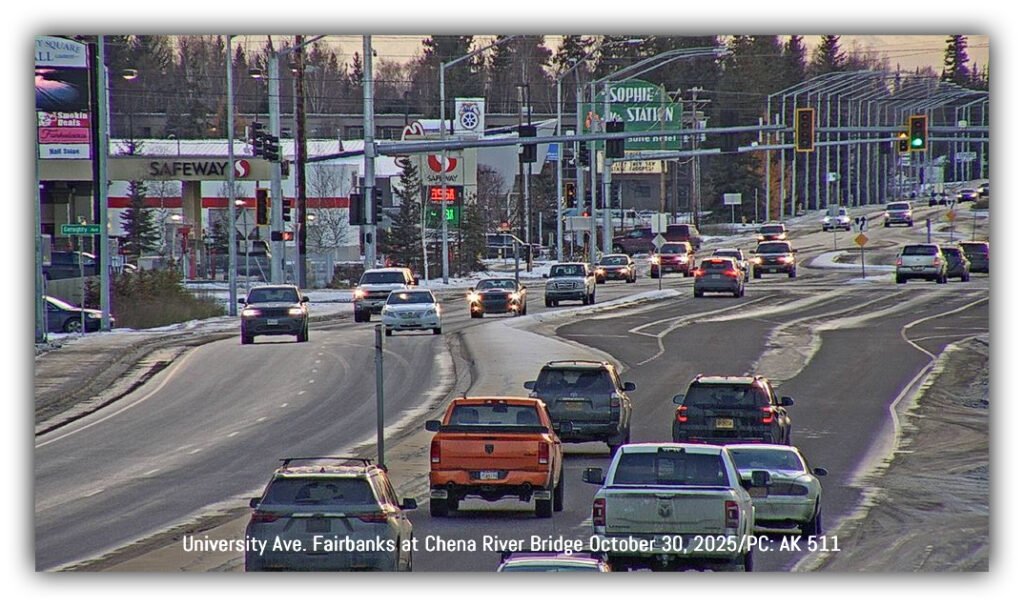Federal relief, environmental reform, and renewed public-safety efforts mark a pivotal moment as Alaska rebuilds from storms, redefines regulation, and reinforces its commitment to community resilience.
By Gina Hill | Alaska Headline Living | October 2025
⛑️Federal and state agencies continue to mobilize across Alaska in the wake of the powerful typhoon that devastated much of the state’s western coastline earlier this month.
President Donald Trump has approved a Major Disaster Declaration for the affected region, unlocking $25 million in federal assistance to aid recovery efforts and rebuild essential infrastructure. The declaration, made at the request of Governor Mike Dunleavy, follows weeks of coordination among FEMA, the Alaska Division of Homeland Security and Emergency Management, and local tribal and municipal authorities.
Governor Dunleavy has announced additional state-level relief measures, including waived replacement fees for vital records and an IRS tax-filing extension through May 1, 2026 for residents directly impacted by flooding and storm damage. Field teams from both FEMA and the Alaska Department of Military and Veterans Affairs remain deployed in several coastal communities to assist displaced residents with emergency housing, transportation, and recovery documentation.
☀️Environmental Policy: EPA Endorses Fairbanks Air Quality Revision

The U.S. Environmental Protection Agency has formally approved Alaska’s revised State Implementation Plan (SIP) for the Fairbanks North Star Borough, marking a significant shift in the state’s approach to balancing public health and economic practicality.
The revised plan eliminates the previous mandate requiring costly home energy ratings as part of air-quality compliance, a move praised by both federal and state officials for reducing regulatory burden while maintaining critical air pollution controls. Alaska Department of Environmental Conservation leaders described the new framework as “a model of cooperative environmental stewardship that aligns clean air goals with local affordability.”
This decision underscores Fairbanks’ long-term struggle with fine-particulate pollution, particularly during winter inversion events, while reinforcing the state’s intent to advance energy efficiency and pollution mitigation through community-specific flexibility rather than universal mandates.
⚡️Resource Development: Senate Advances North Slope Energy Bill

In Washington, D.C., the U.S. Senate has passed legislation that would open large tracts of Alaska’s North Slope to new oil and gas leasing. Supporters argue that the measure will stimulate economic growth and secure U.S. energy independence, while opponents warn of long-term environmental risks to Arctic ecosystems already stressed by climate change.
The bill now heads to the House of Representatives, where debate is expected to focus on balancing national energy priorities with Alaska’s evolving environmental policies. State leaders say the measure highlights a continuing national conversation over how best to manage Alaska’s vast natural resources amid shifting global energy dynamics.
🚨Public Safety: Focus on Impaired Driving Intensifies

Alaska’s law enforcement agencies report a renewed emphasis on curbing impaired driving statewide. In recent weeks, incidents in Wasilla and Fairbanks have drawn attention to the persistent public-safety challenge: in one case, a driver’s blood-alcohol concentration exceeded twice the legal limit; in another, assault charges accompanied a DUI arrest.
According to state data, alcohol contributes to roughly 24% of Alaska’s traffic fatalities, while DUI offenses account for about 15% of all arrests. The state enforces a BAC limit of 0.08%, with sharply escalating penalties for repeat violations — including mandatory license suspension, ignition-interlock installation, and potential incarceration.
Law enforcement agencies are expanding targeted patrols and REDDI (Report Every Dangerous Driver Immediately) outreach, encouraging residents to report erratic or unsafe driving by calling 911 and providing vehicle and location details. Officials emphasize that community participation remains one of the most effective tools in preventing roadway tragedies.
ℹ️ Sources and Official References
National Highway Traffic Safety Administration (NHTSA) — Data on impaired driving incidents and federal safety program coordination with Alaska.
🔗 https://www.nhtsa.gov
Federal Emergency Management Agency (FEMA) — Official disaster declarations, recovery updates, and public assistance data.
🔗 https://www.fema.gov/disaster
Alaska Division of Homeland Security and Emergency Management (DHS&EM) — State-level press releases and individual assistance information related to the Western Alaska storm recovery.
🔗 https://ready.alaska.gov
Office of Governor Mike Dunleavy — Executive updates and public statements on disaster relief and statewide recovery coordination.
🔗 https://gov.alaska.gov/newsroom
U.S. Environmental Protection Agency (EPA) — Approval notice and documentation for Alaska’s revised State Implementation Plan (Fairbanks North Star Borough).
🔗 https://www.epa.gov/ak
Alaska Department of Environmental Conservation (ADEC) — Air Quality Division materials and implementation plan details.
🔗 https://dec.alaska.gov
U.S. Senate Energy and Natural Resources Committee — Legislative information regarding pending North Slope oil and gas leasing bill.
🔗 https://www.energy.senate.gov
Alaska Department of Public Safety (DPS) — Traffic safety statistics, impaired driving enforcement initiatives, and REDDI program details.
🔗 https://dps.alaska.gov




